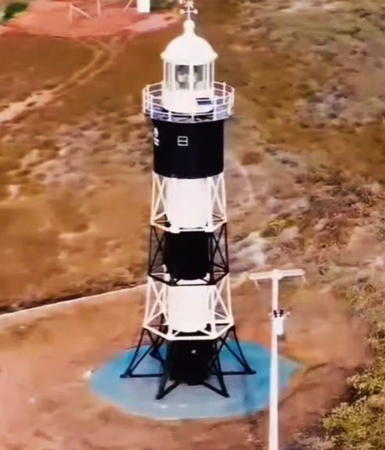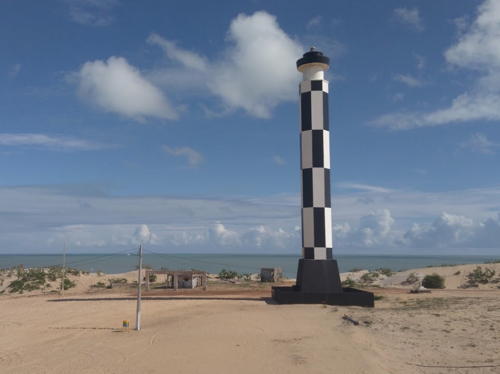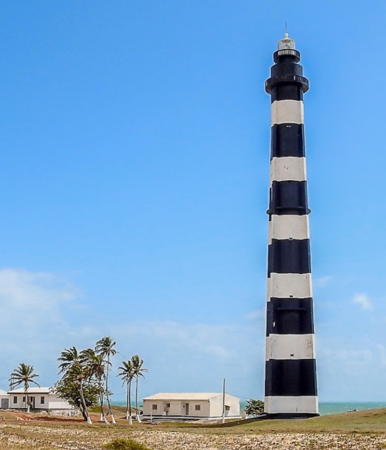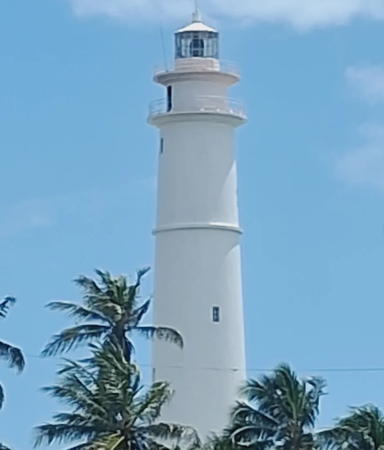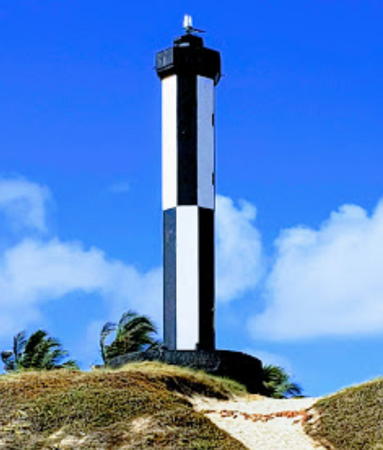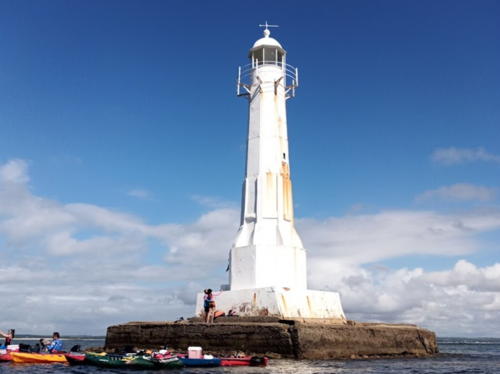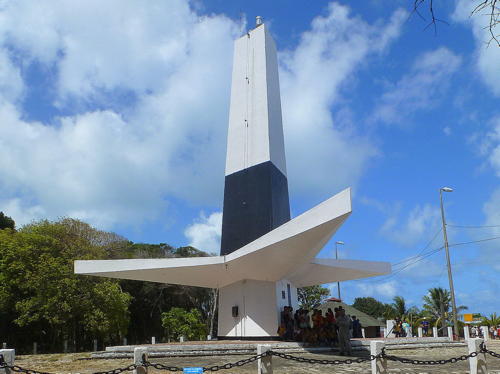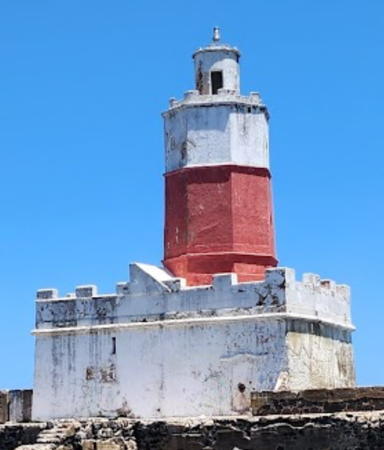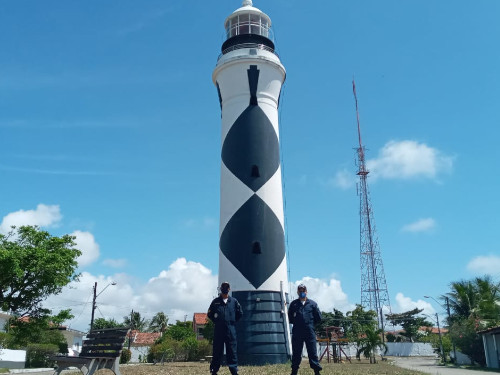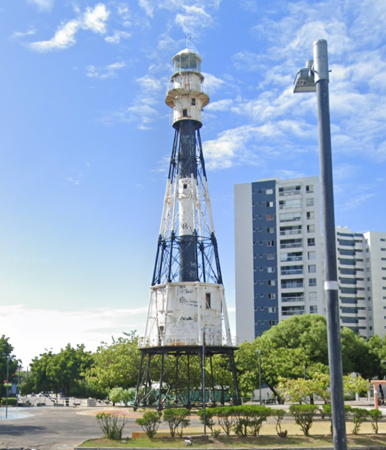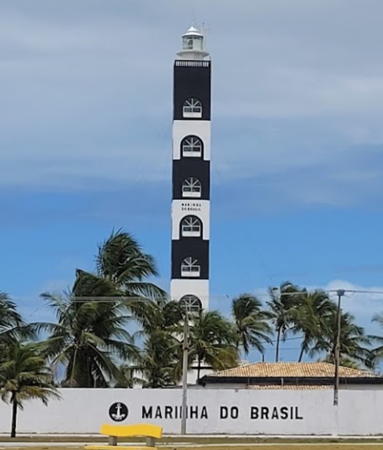The Federative Republic of Brazil, the largest country in South America and fifth largest in the world, has a lengthy coastline, a large number of lighthouses, and a distinguished lighthouse history. Colonized by Portugal, Brazil declared its independence in 1822. Uniquely among American nations it was a monarchy as the Empire of Brazil until 1889.
Brazil is a federation of 26 states and a federal district. This page covers lighthouses of the northeastern "corner" of Brazil, including the states of Rio Grande do Norte, Paraíba, Pernambuco, Alagoas, and Sergipe, five of the nine states in Brazil's Northeast Region. Lighthouses of Bahia have a separate page and the North Northeast Coast page lists lighthouses of Maranhão, Piauí, and Ceará. This tropical coastline faces across the South Atlantic Ocean towards Africa and includes the easternmost lighthouses of the Americas. The largest port is Recife in Pernambuco but there are several other important ports. Tourism has increased in the region in recent years, and some of the major lighthouses are becoming better known.
The Portuguese word for a lighthouse is farol, plural faróis. In Brazilian use the word farol generally applies to all light towers, regardless of size and whether they are enclosed structures or not. In Portuguese ilha is an island, ilhéu is an islet, cabo is a cape, ponta is a promontory or point of land, rocha is a rock, recife is a reef, baía is a bay, estreito is a strait, rio is a river, and porto is a port or harbor.
Active lighthouses in Brazil are owned by the navy (Marinha do Brasil) and maintained by the Centro de Auxílios à Navegação Almirante Moraes Rego (CAMR) in the Diretoria de Hidrografia e Navegacão (DHN). Many of the larger lighthouses are staffed by resident keepers or by rotating crews of naval personnel. Only a small number of Brazilian lighthouses are open to the public.
ARLHS numbers are from the ARLHS World List of Lights. BR numbers are from the official Brazilian Lista de Faroís. Admiralty numbers are from volume G of the Admiralty List of Lights & Fog Signals. U.S. NGA numbers are from Publication 110.
- General Sources
- Faroís Brasileiros
- This web site for Brazilian lighthouses has small photos and historical information for many of the major lights.
- Online List of Lights - Brazil
- Photos by various photographers posted by Alexander Trabas, including photos by Capts. Peter Mosselberger ("Capt. Peter") and Theodore Hinrichs ("Capt. Theo").
- Lista de Faróis do Brasil
- Index to articles on Brazilian lighthouses in the Portuguese edition of Wikipedia.
- Lighthouses in Brazil
- Photos various photographers available from Wikimedia.
- World of Lighthouses - Brazil
- Photos by various photographers available from Lighthouses.net.
- Lista de Faróis
- Online version of the official Brazilian light list.
- Leuchttürme Südamerikas auf historischen Postkarten
- Historic postcard views posted by Klaus Huelse.
- Google Maps
- Satellite view of northeastern Brazil.
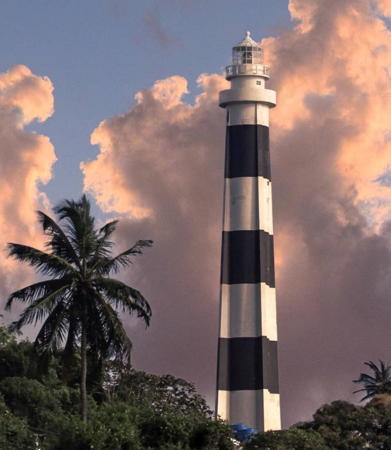
Olinda Light, Olinda, Pernambuco, September 2021
Instagram photo by curtindoasolindas
